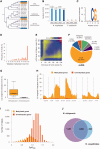The Genome and Methylome of a Beetle with Complex Social Behavior, Nicrophorus vespilloides (Coleoptera: Silphidae)
- PMID: 26454014
- PMCID: PMC4700941
- DOI: 10.1093/gbe/evv194
The Genome and Methylome of a Beetle with Complex Social Behavior, Nicrophorus vespilloides (Coleoptera: Silphidae)
Abstract
Testing for conserved and novel mechanisms underlying phenotypic evolution requires a diversity of genomes available for comparison spanning multiple independent lineages. For example, complex social behavior in insects has been investigated primarily with eusocial lineages, nearly all of which are Hymenoptera. If conserved genomic influences on sociality do exist, we need data from a wider range of taxa that also vary in their levels of sociality. Here, we present the assembled and annotated genome of the subsocial beetle Nicrophorus vespilloides, a species long used to investigate evolutionary questions of complex social behavior. We used this genome to address two questions. First, do aspects of life history, such as using a carcass to breed, predict overlap in gene models more strongly than phylogeny? We found that the overlap in gene models was similar between N. vespilloides and all other insect groups regardless of life history. Second, like other insects with highly developed social behavior but unlike other beetles, does N. vespilloides have DNA methylation? We found strong evidence for an active DNA methylation system. The distribution of methylation was similar to other insects with exons having the most methylated CpGs. Methylation status appears highly conserved; 85% of the methylated genes in N. vespilloides are also methylated in the hymentopteran Nasonia vitripennis. The addition of this genome adds a coleopteran resource to answer questions about the evolution and mechanistic basis of sociality and to address questions about the potential role of methylation in social behavior.
Keywords: burying beetle; epigenetics; parental care; sociality.
© The Author(s) 2015. Published by Oxford University Press on behalf of the Society for Molecular Biology and Evolution.
Figures




Comment in
-
Highlights--Does Methylation Make the Parent? A First Dive into the Genetics of Social Beetles.Genome Biol Evol. 2015 Dec 26;7(12):3414-5. doi: 10.1093/gbe/evv223. Genome Biol Evol. 2015. PMID: 26707162 Free PMC article. No abstract available.
Similar articles
-
Octopaminergic gene expression and flexible social behaviour in the subsocial burying beetle Nicrophorus vespilloides.Insect Mol Biol. 2014 Jun;23(3):391-404. doi: 10.1111/imb.12090. Epub 2014 Mar 20. Insect Mol Biol. 2014. PMID: 24646461 Free PMC article.
-
The Genome and Methylome of a Subsocial Small Carpenter Bee, Ceratina calcarata.Genome Biol Evol. 2016 May 13;8(5):1401-10. doi: 10.1093/gbe/evw079. Genome Biol Evol. 2016. PMID: 27048475 Free PMC article.
-
Duplication and Sub/Neofunctionalization of Malvolio, an Insect Homolog of Nramp, in the Subsocial Beetle Nicrophorus vespilloides.G3 (Bethesda). 2017 Oct 5;7(10):3393-3403. doi: 10.1534/g3.117.300183. G3 (Bethesda). 2017. PMID: 28830925 Free PMC article.
-
Beetle genomes in the 21st century: prospects, progress and priorities.Curr Opin Insect Sci. 2018 Feb;25:76-82. doi: 10.1016/j.cois.2017.12.002. Epub 2017 Dec 18. Curr Opin Insect Sci. 2018. PMID: 29602365 Review.
-
Pheromones Regulating Reproduction in Subsocial Beetles: Insights with References to Eusocial Insects.J Chem Ecol. 2018 Sep;44(9):785-795. doi: 10.1007/s10886-018-0982-9. Epub 2018 Jul 4. J Chem Ecol. 2018. PMID: 29974316 Review.
Cited by
-
Revisiting the ecology and evolution of burying beetle behavior (Staphylinidae: Silphinae).Ecol Evol. 2024 Aug 20;14(8):e70175. doi: 10.1002/ece3.70175. eCollection 2024 Aug. Ecol Evol. 2024. PMID: 39170054 Free PMC article. Review.
-
Genome of the small hive beetle (Aethina tumida, Coleoptera: Nitidulidae), a worldwide parasite of social bee colonies, provides insights into detoxification and herbivory.Gigascience. 2018 Dec 1;7(12):giy138. doi: 10.1093/gigascience/giy138. Gigascience. 2018. PMID: 30535280 Free PMC article.
-
The Updated Genome of the Burying Beetle Nicrophorus vespilloides, a Model Species for Evolutionary and Genetic Studies of Parental Care.Ecol Evol. 2024 Dec 9;14(12):e70601. doi: 10.1002/ece3.70601. eCollection 2024 Dec. Ecol Evol. 2024. PMID: 39659731 Free PMC article.
-
KMT2D deficiency enhances the anti-cancer activity of L48H37 in pancreatic ductal adenocarcinoma.World J Gastrointest Oncol. 2019 Aug 15;11(8):599-621. doi: 10.4251/wjgo.v11.i8.599. World J Gastrointest Oncol. 2019. PMID: 31435462 Free PMC article.
-
Genome of the Asian longhorned beetle (Anoplophora glabripennis), a globally significant invasive species, reveals key functional and evolutionary innovations at the beetle-plant interface.Genome Biol. 2016 Nov 11;17(1):227. doi: 10.1186/s13059-016-1088-8. Genome Biol. 2016. PMID: 27832824 Free PMC article.
References
-
- Boake CRB, et al. 2002. Genetic tools for studying adaptation and the evolution of behavior. Am Nat. 160:S143–S159. - PubMed
-
- Benjamini Y, Hochberg Y. 1995. Controlling the false discovery rate: a practical and powerful approach to multiple testing. J R Stat Soc B Meth. 57:289–300.
Publication types
MeSH terms
Associated data
Grants and funding
LinkOut - more resources
Full Text Sources
Other Literature Sources
Molecular Biology Databases

